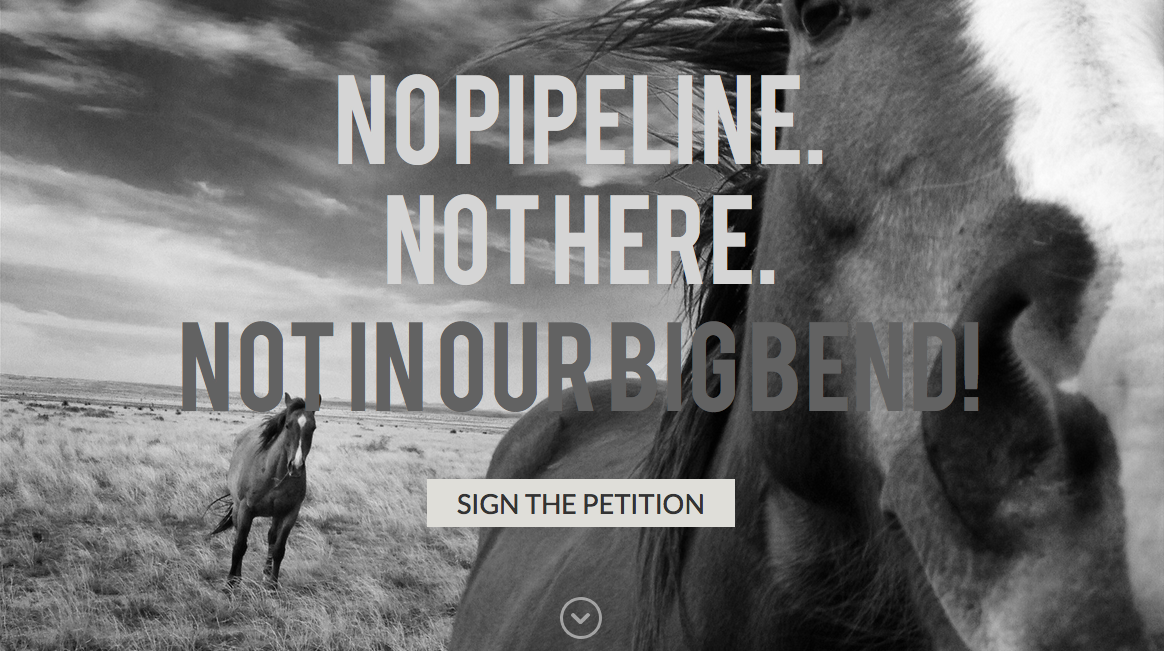
By Nikkie Whitehead
The Big Bend area is what some consider the last frontier of Texas; with its clean air, open spaces, and natural beauty. But that beauty is being threatened by a large natural gas pipeline that is slated to run through the region to supply natural gas to Mexico as part of their energy reform.
The Big Bend area is what some consider the last frontier of Texas; with its clean air, open spaces, and natural beauty. But that beauty is being threatened by a large natural gas pipeline that is slated to run through the region to supply natural gas to Mexico as part of their energy reform.
The Details
The Trans-Pecos Pipeline is to be built for the Mexican Federal Electricity Commission (CFE) to deliver up to 1.4 billion cubic feet of Permian Basin natural gas a day. According to the CFE, the gas will be piped inland from the border to the Laguna region for power generation and industrial use. The exact route across the Big Bend region has not been disclosed but the pipeline is expected to start at a large hub in Waha, near Coyanosa, run south between Alpine and Marfa toward Presidio, and connect near Ojinaga, Mexico, with a large pipeline on the Mexican side.
Landowners along the pipeline should be compensated for damage to their property, but getting easements through private ranch land is a difficult task for the Energy Transfer so far. The pipeline will cut through countless ranches and landowner’s homes throughout the Big Bend region. Hundreds of letters have been sent to landowners in the region for permission to survey the land, included in the mailing was a copy of the Texas Landowners Bill of Rights, which, upon close reading, shows that saying no to condemnation is one of them. The legal concept of eminent domain does not translate well for Big Bend residents when it involves businessmen working for Mexico.


The Fight
Big Bend residents have created the Big Bend Conservation Alliance to fight the Trans-Pecos Pipeline. The Alliance feels the pipeline is incompatible with the traditional values of the region and disregards the incredible significance of the Big Bend’s natural and cultural resources. The pipeline will impact the landscape, plants, wildlife, and archeological sites that the region is famous for. In addition, the pipeline sets a dangerous precedent for increased oil and gas exploration, as well as increased infrastructure.
The company claims that safety is their top priority and the pipeline will be regularly inspected and safety sensors along the line will warn of any problems. The pipeline will be 42 inches in diameter, larger than the controversial 36-inch Keystone XL oil pipeline from Canada, and will be pressurized to 1.440 psi. Trans-Pecos Pipeline construction is estimated to begin at the end of this year or the beginning of 2016 with the goal of having gas flowing into Mexico by 2017.